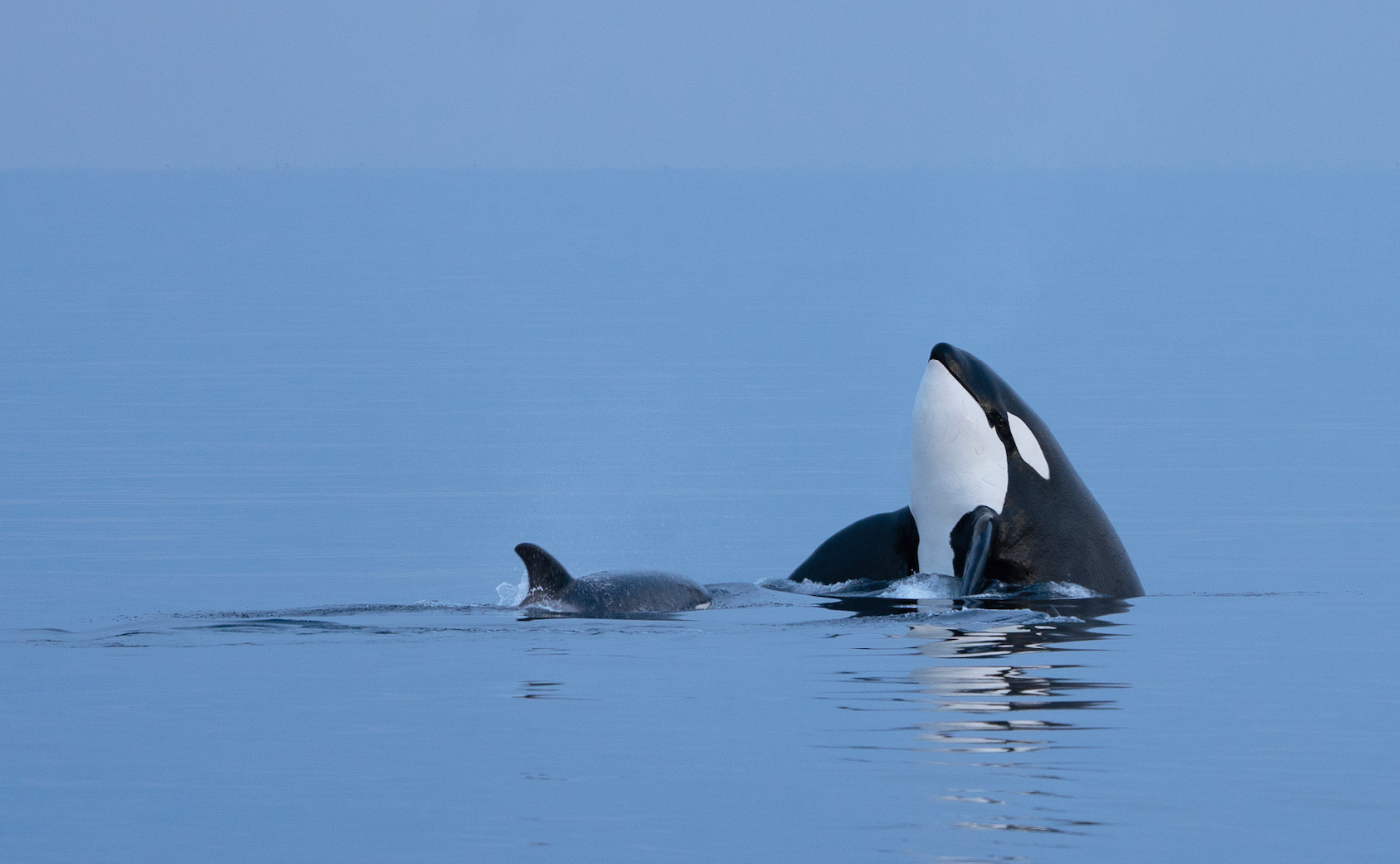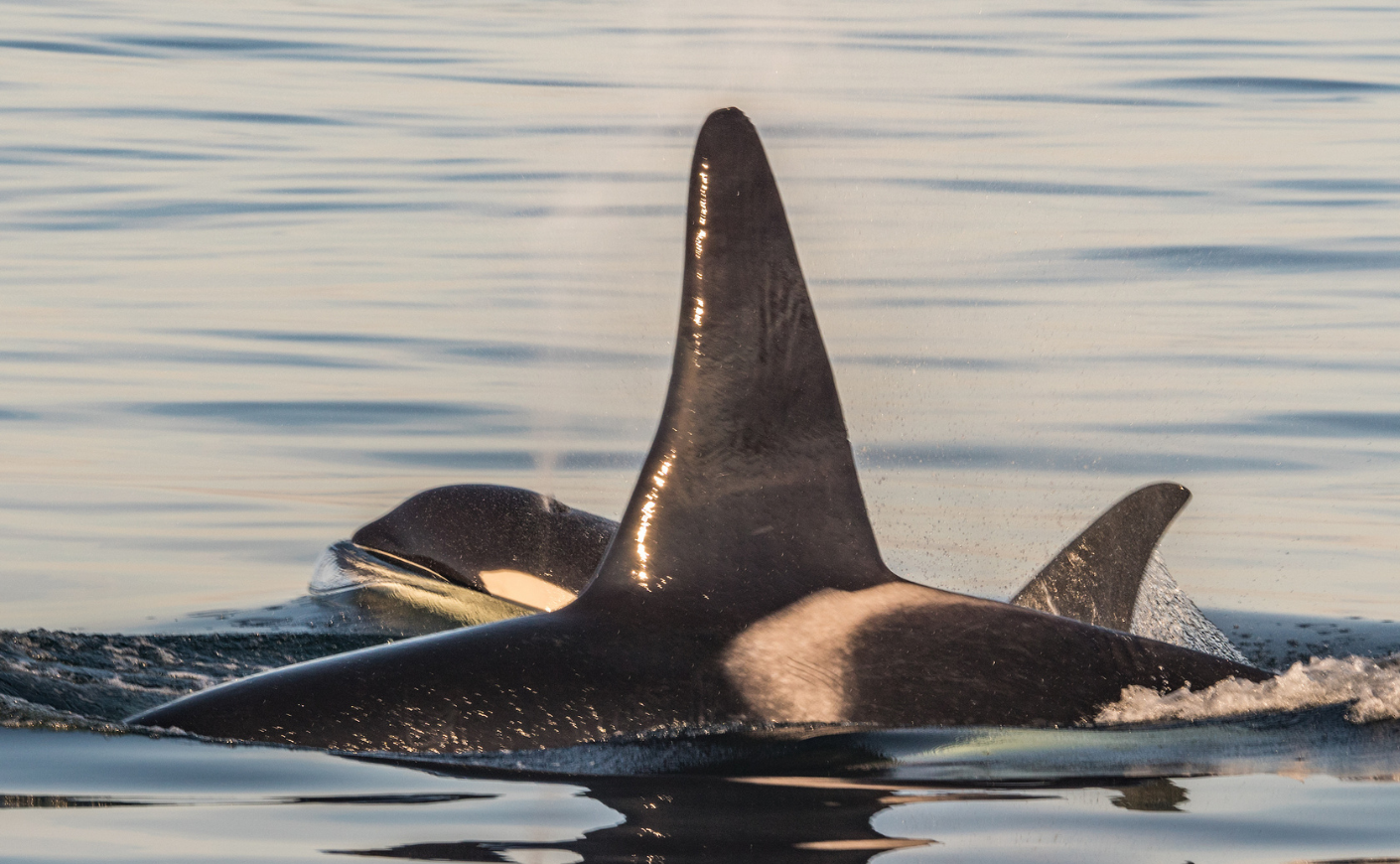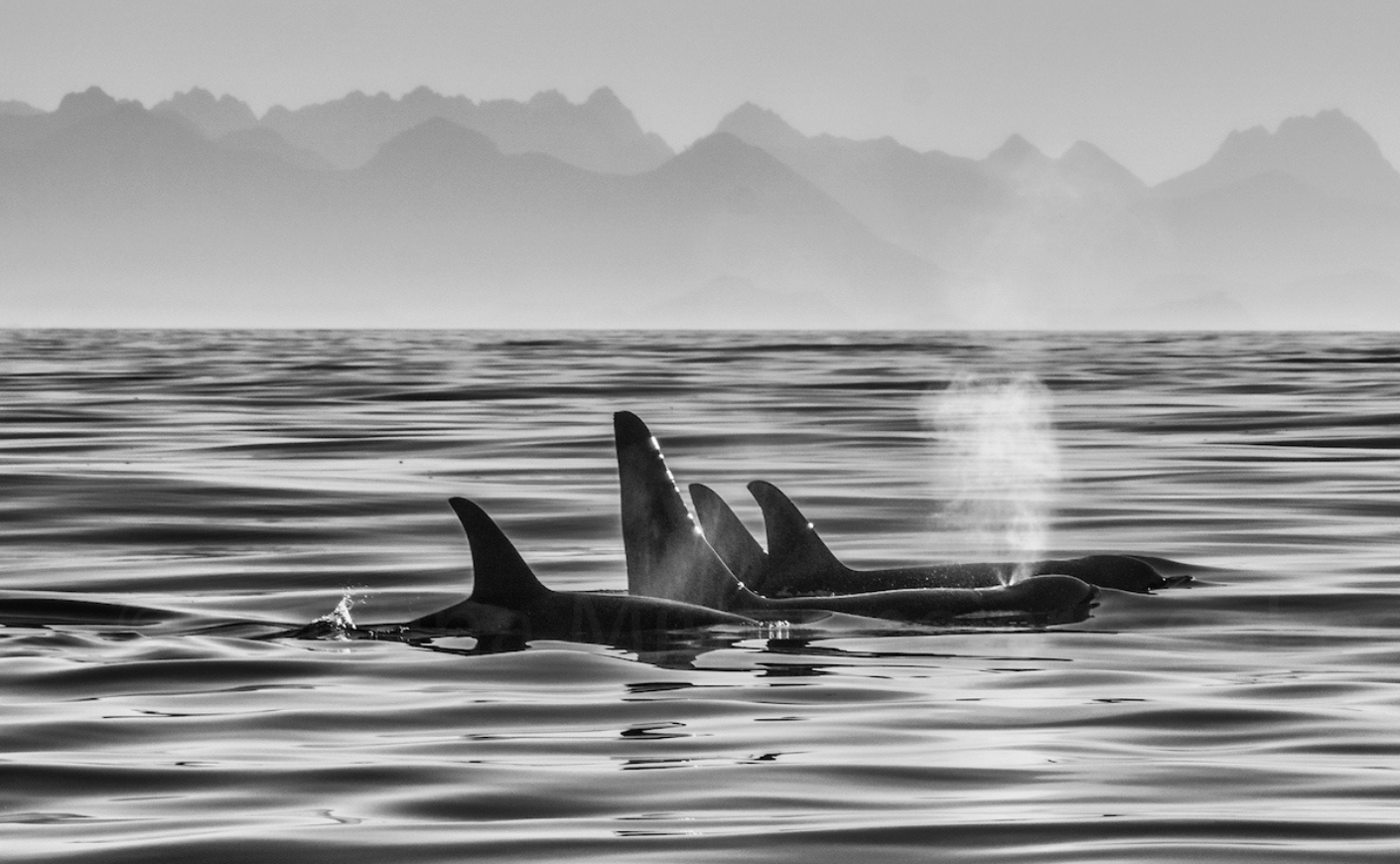Have you ever put your head underwater and just listened? On a good day, you might hear the distant song of a humpback. The ocean is a symphony of sounds, from the gentle lapping of waves to the clicking of dolphins and the rumbling of ship engines. Sound travels faster and farther in water than in air, creating an underwater soundscape that can feel almost alien to our own.
One of my favorite images of this natural beauty comes from the Pacific Northwest, where coastal rainforests form a misty backdrop as a pod of orcas surface for a breath. This is a common sight in the Salish Sea, which connects the Olympic Peninsula and Vancouver Island, between Washington State and British Columbia. Amid this natural beauty is also a constant flow of massive vessels. These ships service the major ports of Seattle and Vancouver, ensuring our daily conveniences are delivered from distant shores to our homes.
From above the surface, we don’t hear much. Still, scientists consider the underwater rumble of this shipping traffic to be a form of habitat destruction for marine life. The noise is deafening to creatures that depend on delicate hearing to navigate, hunt, socialize, and communicate with each other. Imagine if someone built a highway right above your home and then blindfolded you!

Our colleagues at Oceans Initiative say that sound is as important to orcas as all of our senses combined. The noise from these ships impacts marine life beyond simple annoyance, contributing to the extinction of an iconic resident of the Pacific Northwest.
This region brings in millions of tourists every year, with whale watching significantly contributing to local economies. Everybody wants the chance to see a majestic pod of orcas. The Southern Resident Killer Whales (SRKWs), local celebrities of the Salish Sea, are struggling; in fact, there are only 74 animals left. A new study shows that the population, which is genetically different from other orcas, is at risk of extinction. Wild populations of these orcas were decimated for the aquarium trade in the ‘60s and ‘70s. With multiple stressors at play, the SRKWs’ numbers haven’t been able to recover since.
Orcas are highly intelligent creatures, and scientists have observed these distinct populations to have their own traditions, cultures, and languages. Some prefer to eat seals, while others prefer fish. In the case of the SRKW, these picky eaters exclusively prefer to chow down on chinook salmon. Along with their smarts, orcas are deeply social animals who rely on their network for survival — they’ve been observed to grieve their dead. SRKWs communicate with their pod through vocalizations, which help them navigate the waters and hunt for salmon.

The SRKWs are at risk because of a dangerous cocktail of threats, which — when combined with a small population of older animals — could mean disaster. This community of animals is so small that researchers actually know every one of them by name. If we fail to address issues like noise pollution, they could be the first species to go extinct despite such a deep level of understanding by scientists.
Those scientists have pinpointed a lack of salmon as one of the driving causes of SRKW decline, which is another complicated issue plaguing the Pacific Northwest. Of the already sparse salmon available, SRKWs are having a difficult time catching them. Researchers believe this is due to underwater noise from heavy shipping traffic. The noise produced from these vessels is at a frequency that overlaps with SRKW vocalizations, and they have to “speak up” to compensate. Not only that, but evidence shows that this constant noise is stressing the orcas out. The sounds from ship engines interrupt their hunts, due to both an inability to hear one another and because they would rather lose the salmon to escape the din of a passing ship.

One of SeaLegacy’s partners, Oceans Initiative, a recipient of 2024’s 100 for the Ocean initiative, is based in Seattle and Vancouver and employs a team of scientists to tackle this issue. Through solid research, they find viable solutions to inform policy and management. Their study found that if these vessels slowed down a little bit, they could drastically reduce their impact on SRKWs. The problem, however, is that no legislation currently mandates speed limits for these ships — it’s all voluntary.
By raising awareness and compassion for these icons of the Pacific Northwest, we could compel ship operators to slow down or pressure government officials in the USA and Canada to act on SRKW protections. Oceans Initiative is showing us that it is entirely possible to coexist with SRKWs. We need to take some bold steps to help them turn their research into action.
Paul Nicklen, Cristina Mittermeier and Andy Mann co-founded SeaLegacy in 2014. SeaLegacy’s mission is to inspire people to fall in love with the ocean, amplify a network of changemakers around the world, and catalyze hands-on diplomacy through hopeful, world-class visual storytelling.









